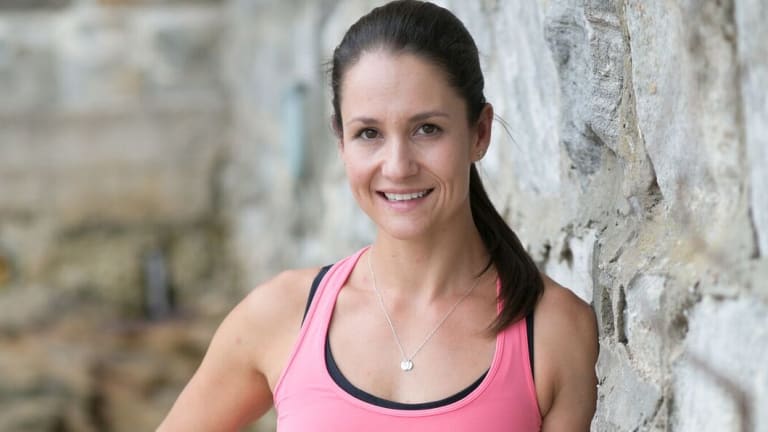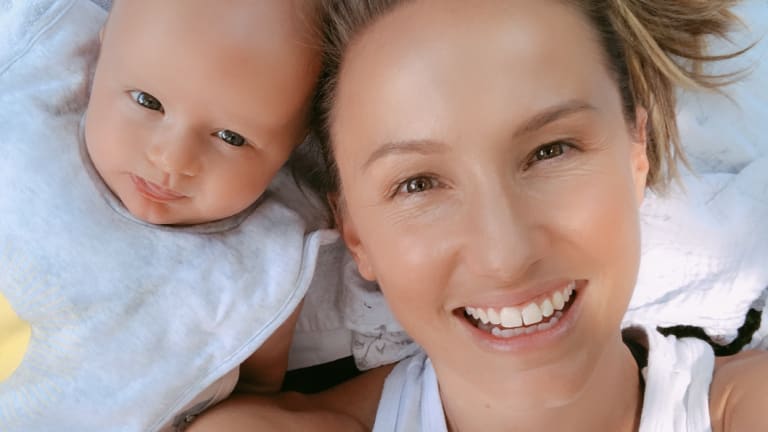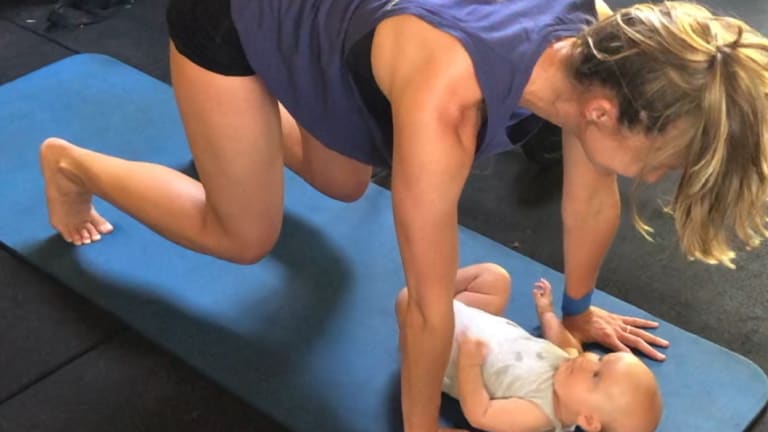
Loading
For now, I’ve settled with walks and the odd mums and bubs pilates class, but I’m not the only new mum who was unprepared for how different exercise – and her body – would be after having a baby.
Research shows postpartum fitness can improve mood, reduce depression and anxiety, maintain cardiorespiratory fitness and promote weight loss, but the guidelines that exist are vague about the best and safest ways to move.
In fact, one ongoing study in the US found that 90 per cent of the participants reported receiving no guidance from their physicians beyond "take it slow". Many turned to the internet for advice instead.
Not even the experts always feel clear about what they can and can't do.
Jen Dugard is a pre- and post-natal fitness expert and author of How to Love your Body as Much as your Baby.

Jen Dugard.
Still, she says after the birth of her first child 10 years ago there was "plenty that [she] didn’t know”.
“I still jumped back into some things too quickly – a CrossFit session, for example, where I did certain exercises ‘because I could’ and because it ‘felt okay’ only to be in incredible pain the next day and then understanding I’d tried to go too hard, too soon,” Dugard recalls.
Pushing yourself too hard post-baby increases the risk of urinary incontinence (which affects about 30 per cent of new mums), painful intercourse (which affects up to 60 per cent of women in the first year post-birth), generalised pain, hernias, separated abdominal muscles (up to 60 per cent experience diastasis recti) or pelvic organ prolapse (when organs drop down into or out through the vagina).
“Prolapse prevalence is around 50 per cent of women, with only 10-20 per cent symptomatic,” says Lyz Evans, practice principal at Sydney's Women in Focus Physiotherapy. “This is why a postnatal check can be invaluable.”
The six week checkup does not mean you’re ready to dive back into the same sessions you were doing before you fell pregnant
Libby Babet
Evans is referring not only to the six-week postnatal doctor’s check – when most women are told they can resume exercise, gradually increasing to between 150 and 300 minutes of moderate intensity exercise a week – but also a six-week check with a women’s health physiotherapist.
They check the pelvic floor muscles, looking for tears which are “not necessarily” painful but do increase the risk of incontinence, the ability to activate and relax the muscles (muscles that are in spasm, often from stitches or episiotomy, can result in painful sex) and they check the supportive tissue of the bladder, uterus and bowel for signs of prolapse.
“The earliest a woman should return to high impact exercise is between 12 and 16 weeks,” Evans says, adding that some women will feel ready at 8 weeks and others not until 8 months.

Libby Babet with daughter, Izzy.
Even after her six week “all clear” from doctors following the birth of her daughter, Izzy, former trainer on The Biggest Loser, Libby Babet instinctively knew her body was not “all clear”.
“My core felt weak, my back hurt, I felt out of balance and my scar still felt fragile,” says Babet, who gave birth via an emergency caesarean in September. “I immediately recognised how important it was going to be to repair things slowly, in the right way.”
Instead of "fitness" she refers to it as "rehab", which started as gentle walks followed by core repair work with a women’s health physiotherapist. Four months later, and with about two centimetres of abdominal separation still to repair, Babet is slowly reintroducing strength circuits and “a tiny bit” of HIIT training.

Libby Babet trains with daughter Izzy.
"Realistically, I know it’ll be around nine to 12 months until I’m able to do the same kind of training I was doing before Izzy arrived" she says. "It’s a process."
Loading
After sharing her journey on social media, "so many women" contacted her about "the terrible outcomes they’d had" from high intensity exercise after the "all clear" at their six week check up.
"The six week check up does not mean you’re ready to dive back into the same sessions you were doing before you fell pregnant," Babet says. "Treat that time as if you are completely new to exercise, or coming back from a major injury."
Dugard agrees, adding that a women’s health physiotherapist can teach the core exercises to "basically rebuild from the inside-out".
Evans believes the current activity guidelines provide a "good basic framework" adding that the Continence Foundation of Australia provides more specific information about rehabilitating the pelvic floor.
But, she stresses the importance of listening to our bodies and growing fit as if from scratch.
"The first three months post-birth should be a time for healing and repair, both physically and mentally, that’s why we call this period the 'fourth trimester’, Evans says"
Postnatal fitness is an exercise in patience, it's an exercise in healing and, with the right support, it's an exercise in letting our bodies lead the way.
"Just like if you were building a house, if you didn’t take the time to put down solid foundations, you would expect it to start to fall and tumble down the track. The postnatal body is no different."






 Add Category
Add Category